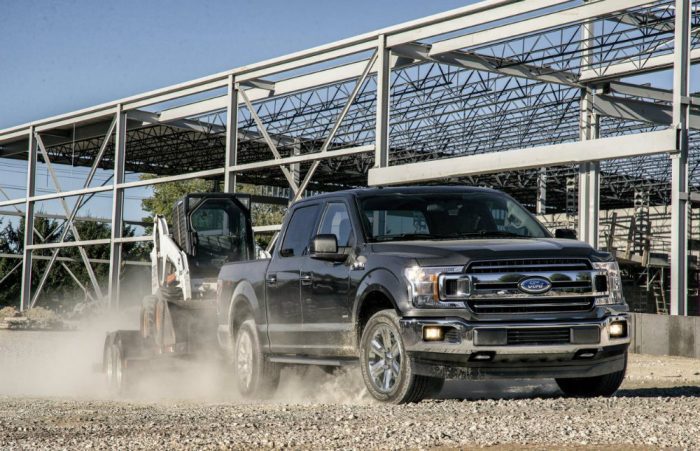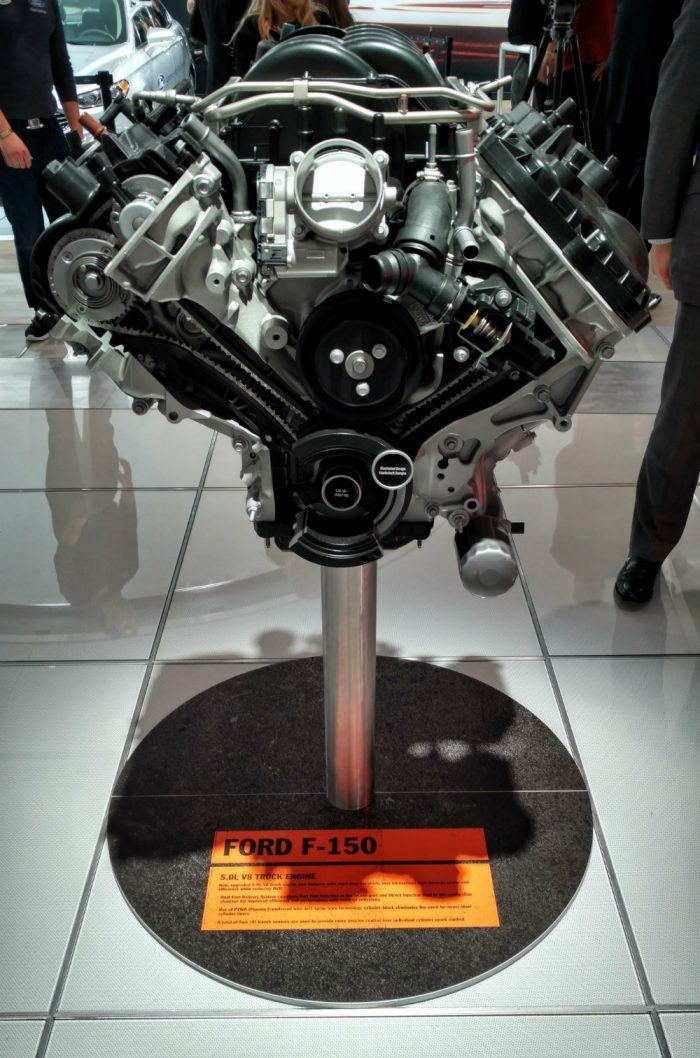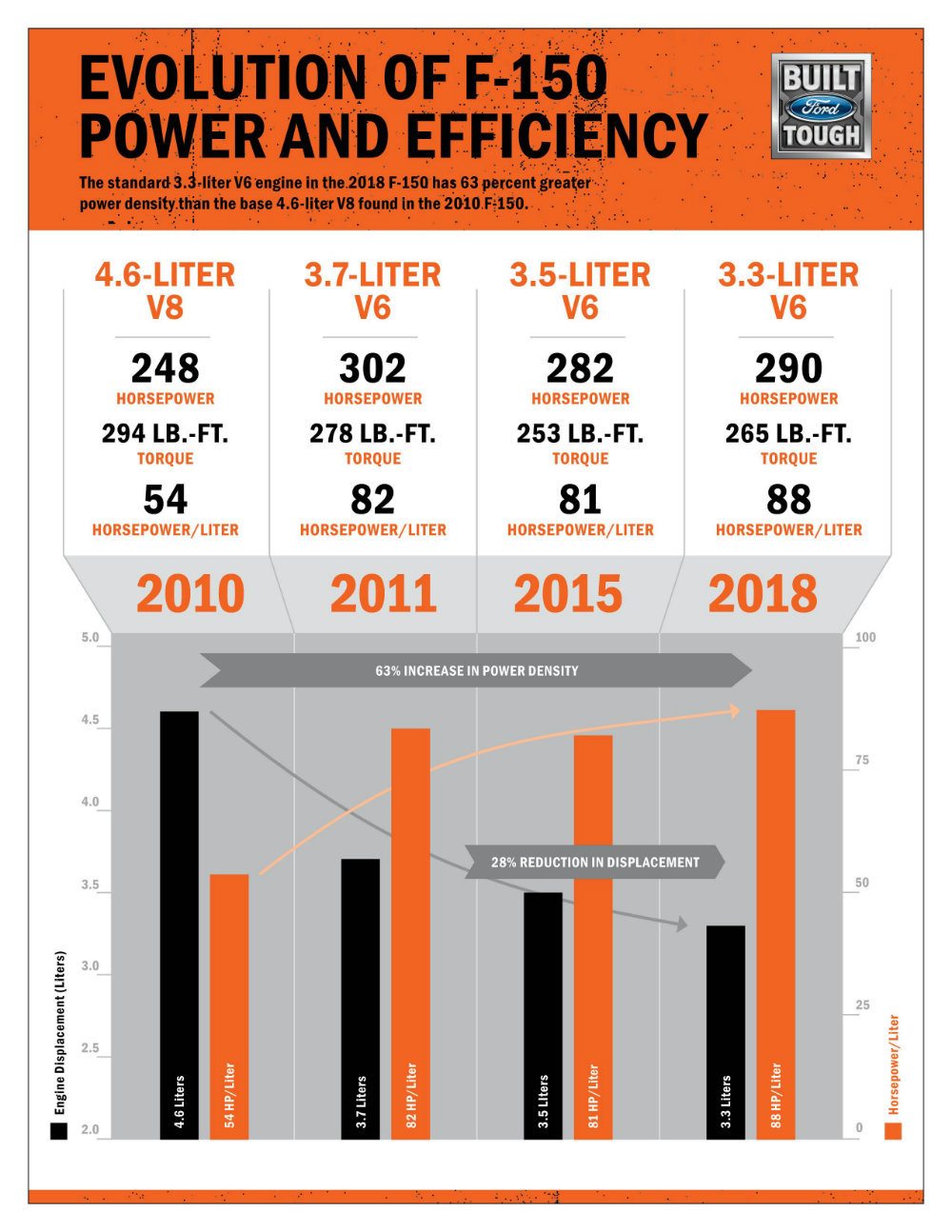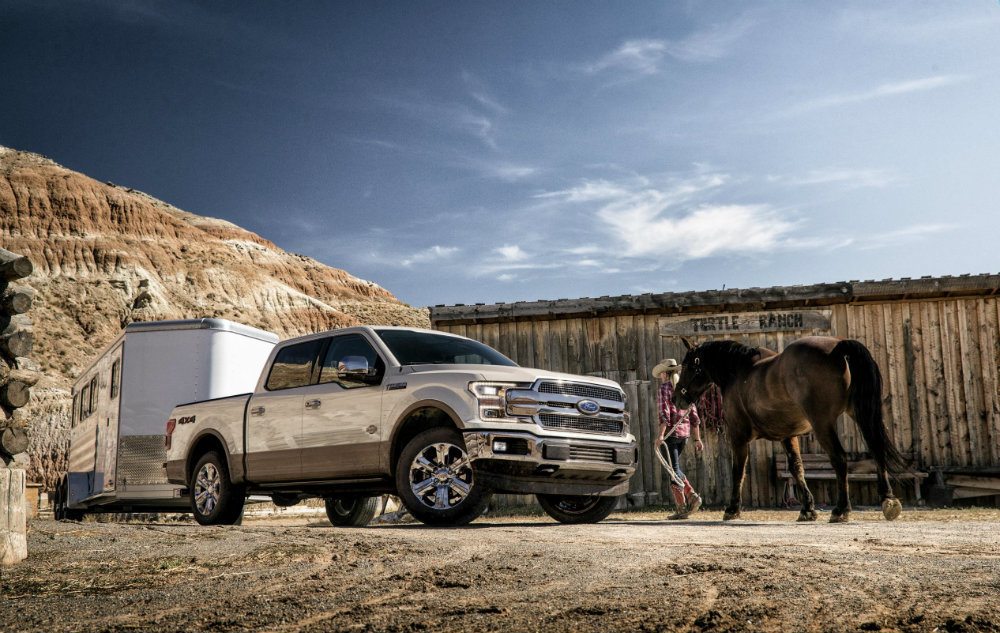Ford Motor Company has, in recent times, put a strong emphasis on material composition. When I was selling Ford trucks seven, eight years ago, the high-strength steel frames were always a focal point. As sales consultants, we would often explain the frame’s benefits, touching on things like towing capability, payload capacity, and overall durability. At the time, Ford was not modest about their steel frame technology (they aren’t today either), so talking about it was a good way to win a customer over on an F-150.
In late 2014, I was part of a group that traveled the country to educate Ford dealers on the forthcoming 2015 F-150. The training was absolutely essential for Ford’s dealership body. The 2015 F-150 was a bold move for the blue oval yet again, as they announced an even smaller EcoBoost in the 2.7 after unveiling the 3.5 version in 2011. It wasn’t just the engine, however. The entire body of the truck was now something called “military-grade aluminum.”
This brought up a whirlwind of reservations, concerns, and even jokes.
Sound Science
Yet Ford is no dummy and the reasoning behind their decisions regarding the F-150 are very sound. Look, Ford ain’t going to bet the farm on their best-selling vehicle. So if Ford decides to drop a smaller, turbocharged plant into their trucks, or go with an aluminum intensive body, there is every reason to believe the i’s are dotted and the t’s are crossed.
Not that I want to spark a huge debate here over naturally aspirated engines versus turbocharged ones – both have advantages – but the EcoBoost is a torque monster. And not that I want to strike up a similar parley on aluminum versus steel – again, both have advantages – but aluminum allowed the F-150 to shed vital pounds, thereby creating a more optimum power-to-weight ratio, which only amplifies the already roid rage nature of the EcoBoost engines.
The point is, Ford is becoming a master of less weight, lower displacement, but higher capacity. They effectively say, “we have the stability and rigidity of steel underneath in the frame, the lightweight, yet durable nature of aluminum on the outside, and a more efficient, more powerful plant under the hood.” Ford is in combination mode at all times, pulling out the benefits of various materials and engine technologies to provide, in the F-150, a single invincible (nearly) vehicle.

Family Tree
The F-150’s older brother, the Super Duty, reflects this too. The forthcoming 2018 Expedition, the latest in the family to receive an aluminum body and a steel frame makeover, also reflects it. Not exactly a direct comparison, but remember when the 5.0 Mustang debuted in 2011 and dusted stock Camaros and Challengers on a quarter mile? Smallest displacement engine of the three, so on paper it may not have initially computed, until the Mustang’s weight entered the equation.
Ford is working this concept deeper into their DNA, and it’s seen once again with their flagship F-150. The truck for 2018 continues its usage of a high-strength steel frame and military-grade aluminum body, but with more efficient, more powerful engines. The first is the 3.3-liter V6 for the entry level F-150s. The plant adds dual port and direct injection to create more torque and provide better fuel economy. With the aluminum body factored in, the standard 3.3-liter V6 offers a 5 percent power-to-weight ratio improvement versus the steel-bodied 2014 F-150 with the 3.7-liter V6.
The 2.7 EcoBoost, entering its second-generation, jumps from 375 lb-ft. of torque to 400 lb-ft., with the increase happening at lower engine speeds. The 2.7 is now paired to a segment-exclusive 10-speed automatic transmission to increase performance and efficiency. Next spring, a 3.0-liter Power Stroke V6 diesel arrives for the F-150, a mill designed, engineered, and tested in-house by the blue oval. With Ram’s EcoDiesel, the Titan’s Cummins, and the Colorado’s Duramax (with rumors Silverado will get similar treatment), it was only a matter of time before Ford introduced something like this.

V6 King, V8 Kingdom
The 3.5-liter EcoBoost remains unchanged in power from 2017 to 2018, standing tall at 370 horsepower and 470 lb-ft. of torque. Horsepower nutzos can go for the Raptor, where the high-output 3.5 EcoBoost wraps up 450 ponies and 510 lb-ft. of torque in a nice little package. Yes, a V6 boasting these numbers in a truck was, at one time, a little odd, and goodness knows those early days of moving EcoBoost F-150s took some salesmanship.
A hardcore truck buyer at the time was often resistant to the idea that a V6 could do the job (and a better one) of their V8. I was lucky my underwear didn’t end up flying high on one of the light poles over the lot, as if it were some dealership rendition of the Nickelodeon series, Salute Your Shorts.
Today, however, Ford’s customers are not out of sorts with the array of V6 engines, and Ford sales consultants need not be in fear for their drawers. If anything, customers have readily embraced Ford as the V6 king: 75 percent of new Ford trucks this year have rolled off the showfloor with V6 engines.
And Ford still offers an impressive 5.0-liter plant. Significant upgrades were made for 2018 to the dual port and direct injection systems to increase performance. The 2018 F-150 engine received the same spray-on bore liner treatment as the Mustang GT350 in an effort to remove additional weight from the aluminum block.

Terrible Ideas, Remarkable Outcomes
It’s important to note the 3.5 EcoBoost was hanging around Ford’s camp for a moment before being dropped into the F-150 in 2011. The Taurus SHO and Flex had it, as did the Lincoln MKS and MKT. It wasn’t until it hit the F-150 that Ford became bonkers.
And aluminum, alas aluminum. It’s fine for airplanes, high-speed rail trains, skyscrapers, electrical wires, supercars, and the iPhone, but in a truck it’s just plain stupid? No foreseeable benefits whatsoever, just a beer can on wheels.
Notice how aluminum, just like V6 engines in a truck, didn’t become a terrible, half-baked idea until Ford started landing segment-leading figures in towing, payload, and fuel economy with their stupidity.
Carl Anthony is Managing Editor of Automoblog and resides in Detroit, Michigan. He studies mechanical engineering at Wayne State University, serves on the Board of Directors for the Ally Jolie Baldwin Foundation, and is a loyal Detroit Lions fan. Photos, Source & Graphic: Ford Motor Company.
Photos, Source & Graphic: Ford Motor Company.


